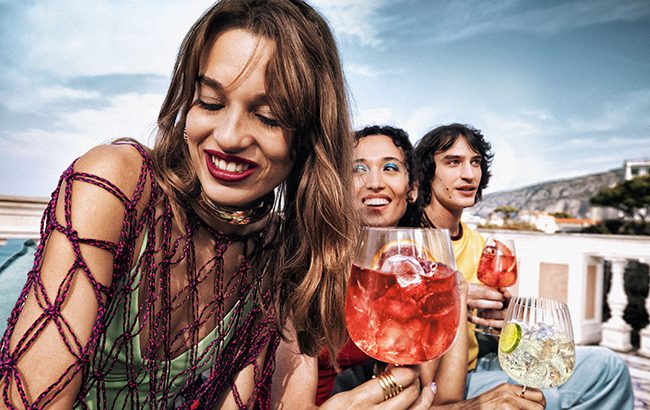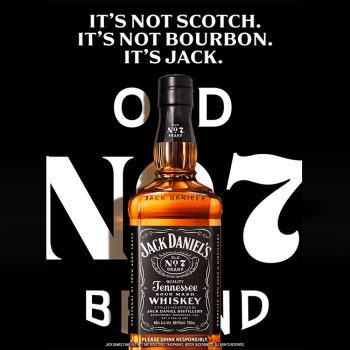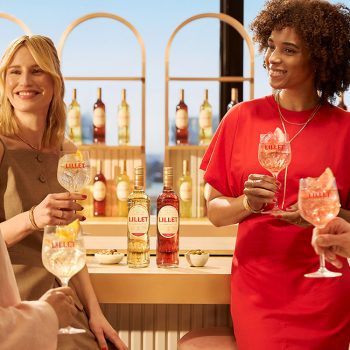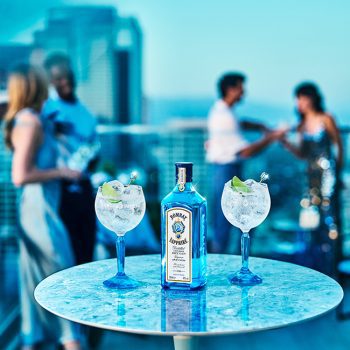How Western Europe is surviving the trade war
By Tom Bruce-GardyneDespite weathering tough times, Western Europe’s spirits industry sees signs of encouragement for the future.

*This feature was originally published in the June 2025 issue of The Spirits Business magazine.
It was in June 2018 that spirits in Western Europe were dragged into an unrelated trade war with the US after 21 years of zero-for-zero tariffs. In response to the US hitting on steel and aluminium imports, Jean-Claude Juncker, then EU Commission president, announced there would be retaliation on “motorcycles, Harley Davidson, on blue jeans, Levi’s, on Bourbon. We too can do stupid.”
By the time those 25% tariffs were suspended in January 2022, US whiskey shipments to Europe – its biggest foreign market, had slumped by 20% in value to US$440 million. Meanwhile, single malt Scotch was faced with a similar tariff from 2019-2021 that punched a £600m (US$800m) hole in its US exports. The cause was a separate trade dispute over aircraft subsidies, but you can see where US president Donald Trump may have got the idea of punishing an iconic spirit. So, perhaps it was “stupid”.
Chris Swonger, CEO of the Distilled Spirits Council of the US, is more diplomatic. “It was just very unfortunate what the EU did in 2018,” he says. “That got our industry as a focus point, and hurt the EU distilled spirits industry just as much as it hurt US distillers. We are encouraged that the EU and the US are in constant dialogue, and we believe there is an opportunity to disentangle distilled spirits from these broad debates.”
An uneasy truce
For now, there is an uneasy truce. In March, the EU dropped plans to impose a 50% tariff on Bourbon when Trump threatened to hit every drop of alcohol imported from the EU with a 200% tax. The bad news is that Brussels has included American spirits in its retaliatory tariff list in response to the current blanket 10% levy on US imports. The separate 25% levy on EU cars into America is particularly painful for Germany, which has two-thirds of that market by value.
 “We see a high number of insolvencies, both corporate and private, and job cuts, especially in the automotive sector,” says a Jack Daniel’s spokesperson about Germany. “This leads to general uncertainty, a negative consumer climate, and high saving rates. Consumers are simply not in the mood to spend their money on things that are felt to be just nice to have. In this environment, competition gets more intense – both among retailers and manufacturers. The promo share in spirits is increasing, and consumers increasingly buy on discount. However, even in this difficult environment, there are growth opportunities by focusing on the right consumer segments, on winning consumers at the point of sale, generating trials, and launching great innovations.”
“We see a high number of insolvencies, both corporate and private, and job cuts, especially in the automotive sector,” says a Jack Daniel’s spokesperson about Germany. “This leads to general uncertainty, a negative consumer climate, and high saving rates. Consumers are simply not in the mood to spend their money on things that are felt to be just nice to have. In this environment, competition gets more intense – both among retailers and manufacturers. The promo share in spirits is increasing, and consumers increasingly buy on discount. However, even in this difficult environment, there are growth opportunities by focusing on the right consumer segments, on winning consumers at the point of sale, generating trials, and launching great innovations.”
Joris Boer, vice-president, commercial growth and strategy, Europe and Latin America at Bacardi, agrees. “Germany does have economic challenges, and is a very price-focused market, however there are still opportunities for our industry, beginning with premiumisation in the on-trade,” he says. “Germany is a great market for apéritifs so for a brand like Martini, it is full of opportunities.”
In Pernod Ricard’s half-year results in February, CEO Alexandre Ricard said the country was in “sharp decline”, and had gone into recession. Pernod Ricard Northern Europe CEO Julien Hemard admits “it’s very challenging”, and “the discretionary spend is not there”, yet he sees grounds for optimism in innovation, apéritifs, and ready-to-drink (RTD), with Lillet being a case in point.

The apéritif brand has been repackaged, and its new campaign ‘The art of living – French-style’ is a hit in its two biggest markets. “The Germans and Austrians love it,” says Hemard. With Lillet Berry, one of three new RTDs, he hopes to create a “pink wave” to challenge the Aperol Spritz.
Data from IWSR reveals a mixed picture in Germany. From 2018 to 2023, volumes were down by 1% for rum, 2% for vodka, and 3% for Tequila on a compound annual growth rate (CAGR) basis, while whisky surged by 10% for Scotch, 11% for Irish and 3% for American. In terms of shipments, the country is the sixth-biggest Scotch market by volume, and ninth by value. Last year it was worth £169m (US$227m), down from a peak of £201m (US$270m) in 2022. Looking ahead (2023-28), IWSR expects all major spirits will be flat or in decline, apart from Irish whiskey, which will see CAGR growth of 4%.
Moving on from Germany, Boer says of Bacardi: “We are in a relatively good place in Western Europe; however, the region is not without its challenges. Consumer sentiment is lower than in previous years and there is still some normalisation post-Covid, yet, wherever there are challenges, there are also opportunities for growth.” Of Spain, he says: “Tourism is coming back strong, and, of course, that is super-good news for Patrón and Grey Goose as it’s the super-premium categories in nightlife where we really see great movement.
“Like many other markets across Europe, Spain has a thriving day life as well as nightlife, with the rise in recent years of the tardeo occasion,” he adds, ‘tardeo’ being a mash-up of ‘tarde’ (afternoon) and ‘tapeo’ (going out for tapas). This shift to drinking earlier in the day favours Bacardi’s famous vermouth brand. But “it’s not just the perfect Martini occasion”, says Boer. “We are also seeing a lot of traction for signature serves from two of our other brands: the St-Germain Spritz and the Patrón Paloma.”
It has been good for apéritifs in general, not least the category leader – Aperol, which accounts for 24% of Campari’s global net sales. The orange wave that swept Europe may have slowed, but Campari believes its potential is unlimited. The company tracks Aperol’s performance against beer, and even in Italy its share is only 1.2% by comparison.
Meanwhile, the brand has been trying to expand its year-round appeal, as Andrea Neri, managing director of Campari’s House of Apéritifs, explains: “We positioned Aperol Spritz as a beverage that brings the summer vibe to winter days, with significant success in winter activations, such as the ‘Alps Takeover’, where we activated more than 100 on-premise outlets in several ski resorts.”
In its first-quarter 2025 results, Campari’s sales were down by 4% in Europe, Middle East and Africa (EMEA), with declines in Germany, Italy, France, and the UK, which collectively account for 31% of the group’s turnover. Much of the downturn was blamed on Easter’s late arrival this year – a fact mentioned 15 times by CEO Simon Hunt when presenting the results in May. According to Neri: “Easter usually signals the start of the peak season for apéritifs in Europe, especially in core markets such as Italy and Germany.”

At Pernod Ricard, Hemard talks of “a cyclical downturn” in the region, and says: “The UK was probably the first to enter this cycle, and is now starting to pick up. Tequila has become a very exciting category, and Kahlúa is booming there.”
Agave spirits have surged in Europe, with Tequila up by 7% CAGR (2028-23), and mezcal up by 11% (IWSR data), while Diageo claims its Tequila portfolio has seen CAGR growth of 29.7% across the region since 2019.
But Hemard says “the base [for Tequila] is still very small. We still need consumers to endorse it and embrace it. It’s still to be confirmed how big it’s going to become.” Mezcal is tiny by comparison, but with Pernod owning the leading brand – Del Maguey – he believes “it will become the single malt of agave, though it will take more time for people to really get into it”.
While mezcal is well established in the US, in the UK it lacks the connection to Mexico the US has, concedes George Hailstone who is currently launching Pelo del Perro, or ‘hair of the dog’, mezcal in the UK. “But if you went into a bar in London five years ago, you might have struggled to find a mezcal. Now, you’d struggle to find a bar without one.”
Analyst Laurence Whyatt, head of European Beverages Research at Barclays, believes US demand held up Tequila’s move into Europe. “If you were Diageo, you weren’t going to push it into the UK because you hadn’t got the supply,” he says. “Now you do because the US is a bit slower, and loads of agave was planted in the past few years. It’s not yet an established category, but the growth has been pretty phenomenal.”
His long-term concern for the region is around demographics. “You need young people to have growth in alcohol, and most countries in Europe are facing a declining younger population,” Whyatt says. This is particularly acute in Germany, where “young people are forecast to decline 11% over the next decade”, he claims.
Another structural issue mentioned by analysts concerns Gen Z and Millennials drinking less. “But moderation has always been there in Europe,” retorts Hemard. “We think this will continue, and we’re happy about it. We are all about premiumisation – people drinking less but better.” Meanwhile, like everyone he is alive to the potential for no/low ‘spirits’, especially if they don’t taste that way. “We have just launched Ramazzotti Aperitivo Arancia 0.0%. Honestly, with ice and tonic, you do not know its ‘no-alc’.”
How do you see younger consumers shaping the future of drinking in Western Europe?
Lucy Smith – founder, Neurita Tequila
“Younger consumers are reshaping the alcohol landscape in Western Europe – not just in what they’re drinking, from Tequila to non-alcoholic alternatives, but in how they’re crafting and enjoying their drinks. Social media, particularly TikTok, is driving cocktail culture like never before – from easy homemade serves to stylish ‘elevated’ cocktails that turn a simple drink into a statement. Neurita Tequila was born out of this very movement. I kept seeing elevated Margaritas being shared online – they weren’t just cocktails; they were the centrepiece of a sophisticated girls’ night out. That cultural moment inspired the brand.”
Related news
Desi Daru features at Sushisamba
